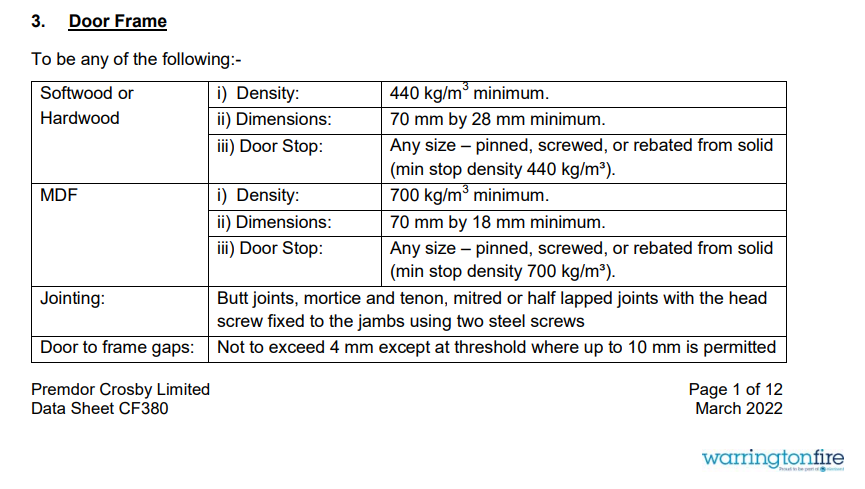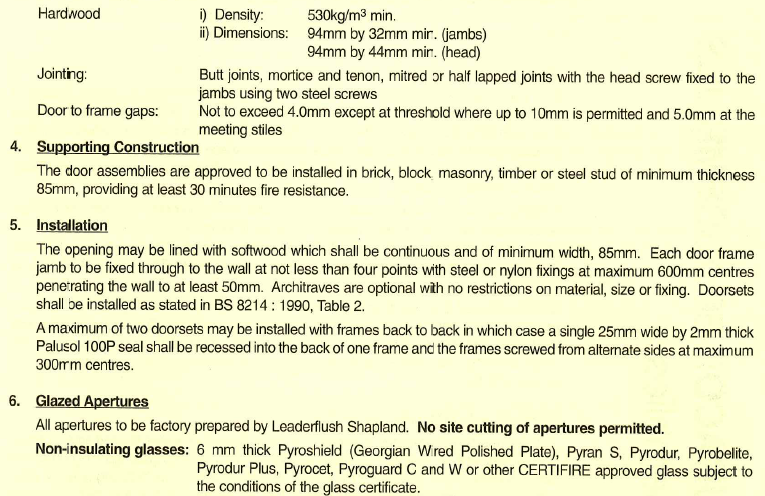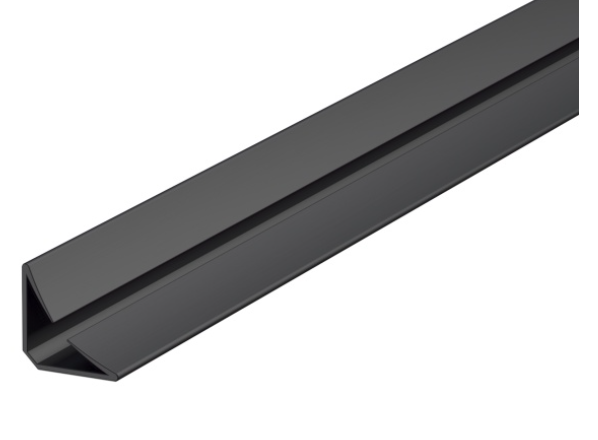-
Posts
495 -
Joined
-
Last visited
Everything posted by Neil Ashdown MAFDI
-

Types of locks on flat entrance doors
Neil Ashdown MAFDI replied to a topic in Fire Doors and Accessories
Guidance available here: https://assets.publishing.service.gov.uk/government/uploads/system/uploads/attachment_data/file/1124733/Approved_Document_B__fire_safety__volume_1_-_Dwellings__2019_edition_incorporating_2020_and_2022_amendments.pdf Building Regs Approved Document B appendix C section C15. Also 'Hardware for Fire & Escape Doors: Code of Practice' http://firecode.org.uk/Code_of_Practice_hardware_for_fire_and_escape_doors.pdf Clearly, this door is damaged beyond repair at the closing stile and the markings on the lock faceplate cannot be read from the photo so unsure if the lock pre-dates Construction Products Regulations. All parts of the lock should be fitted tightly to the door leaf and door frame with no unnecessary gaps or voids from 'over-morticing' and at the correct position (usually between 800mm and 1200mm from the bottom edge of the door depending on the door manufacturers installation requirements). -
Could the conservatory be part of the house? That would be the criteria for Building Regulations, I think. Local Building Control might be able to answer your question.
-

Do door stops have to be of particular thickness?
Neil Ashdown MAFDI replied to a topic in Fire Doors and Accessories
At a hotel- 11 replies
-
- door stops
- fire door
-
(and 1 more)
Tagged with:
-

Do door stops have to be of particular thickness?
Neil Ashdown MAFDI replied to a topic in Fire Doors and Accessories
It is understood that fire doors offer improved performance when fitted with intumescent edges seals and obviously smoke seals, so this would be a matter for your fire risk assessment.- 11 replies
-
- door stops
- fire door
-
(and 1 more)
Tagged with:
-

Double door with gap in the middle
Neil Ashdown MAFDI replied to a topic in Fire Doors and Accessories
Here is an example of 10mm intumescent seals fitted to rebated meeting edges. But the installer should check the specific requirements with the particular fire door manufacturer. -

Fire door inspection
Neil Ashdown MAFDI replied to Chris sutherland's topic in Fire Doors and Accessories
https://www.firedoorscomplete.com/training-qualification -

Front Entrance Doors - Fan Light Issue
Neil Ashdown MAFDI replied to 54321M's topic in Fire Doors and Accessories
The door supplier is correct that its very unlikely that any fire door set will have evidence of fire resistance performance with fire-stopped services passing through any part of it. On the flip side there are many fire-stopping products with certification for fire resistance performance when used with cables and pipes passing through walls. Consult a fire-stopping specialist for advice. -
Refer to the specific fire door leaf manufacturer's installation instructions or product data sheet for information about door rebate stop requirements. For example only:
-
When inspecting fire doors, two of the key requirements are that products used for repairs and upgrades have suitable evidence of performance and that they are fitted correctly. These products have evidence of performance and need to be fitted in accordance with the manufacturer's requirements.
-
You can download product data including the DoP and evidence of performance here https://framefit.co.uk/
-
Some fire doors can have apertures for fire resistant and smoke restricting letter plates. My advice would be to engage a competent & experienced fire door inspector to verify whether or not the doors are suitable in terms of their fire and smoke performance, as flat entrance doors.
-
This might help? Lots of technical data on fire door blanks and you can contact their Technical Dept to discuss your plans: https://falcon-timber.com/downloads/
-
https://www.firedoorscomplete.com/news/can-i-certify-a-fire-door The same goes for maintenance and repairs.
-

Reducing gaps between door and frame
Neil Ashdown MAFDI replied to a topic in Fire Doors and Accessories
For a certificated fire door made in say 2007, the only certification you can reliably use would be the certification issued at that time. This is because of the possibility that that certification published later may refer to a door design that has been revised in some way and therefore different to the original door. Obviously, the certification refers to a particular design of door and can only be applied as such. The same manufacturer may have many different door designs. -

Fire doors in a domestic 3 storey house
Neil Ashdown MAFDI replied to a topic in Fire Doors and Accessories
https://www.gov.uk/government/publications/fire-safety-in-purpose-built-blocks-of-flats -
From your description regarding the hinge fixing points AND the door being cracked, it may be better to replace the door. Without seeing the full extent of the defects its impossible to be more specific.
-

space between fire door frame and opening
Neil Ashdown MAFDI replied to a topic in Fire Doors and Accessories
The issue with using plywood for lining the structural opening or adding to the back of the door frame could be one of supporting evidence. What you say (above) may well be reasonable but you may need supporting evidence from the door manufacturer to satisfy your client. Best to stick with the British Standard and door manufacturers installation data sheet because that evidence is clearly demonstrable. -

Reducing gaps between door and frame
Neil Ashdown MAFDI replied to a topic in Fire Doors and Accessories
The issue for the many building operators that have Fire Doors manufactured by Leaderflush Shapland is that they must still maintain those doors to meet fire safety regulations. Clearly these doors will have been installed some years ago and as this manufacturer is no longer in business the certification and data sheets for the doors are no longer available from the website of the third party certification company. However where those records are archived, the data sheet can be referenced to assist with inspections, maintenance and repairs. For example certificate data sheet CF113 (see excerpt attached) from the year 2007 is clearly no longer valid but the door in question would have been manufactured and installed of its time, therefore this is the correct document to use for maintenance and repair purposes - so there's your proof! What Sean says would be correct in a scenario where a door supplier was attempting to market for sale new fire doors using that out of date certification, but clearly not where somebody is carrying out maintenance and repairs to an old fire door that bears the matching certification label! -

space between fire door frame and opening
Neil Ashdown MAFDI replied to a topic in Fire Doors and Accessories
A gap of 8mm to 10mm between the edge of the door leaf and the latch keep is excessive. Maybe the latch keep has been overly recessed into the door frame, you don't say and haven't provided a photograph? If so it should be possible to remove the latch keep and repair that section of the door frame so that the keep can be reinstalled with a tighter gap. -

Reducing gaps between door and frame
Neil Ashdown MAFDI replied to a topic in Fire Doors and Accessories
Hi Sean, At face value your statement appears to be misleading and, in view of the possibly thousands of buildings containing Leaderflush Fire Doors, needs clarification about the circumstances in which the doors would be a "fail in a court of law"! -

Fire and Smoke Seals in door stops
Neil Ashdown MAFDI replied to LEZC's topic in Fire Doors and Accessories
Intumescent fire seals can only be fitted in the door frame reveal or the door leaf edges but there are smoke seals that are designed to fit to the rebate stop of the door frame so that the door leaf closes on to them to compress the fin so as to provide a seal between the door leaf and door frame. -

space between fire door frame and opening
Neil Ashdown MAFDI replied to a topic in Fire Doors and Accessories
Use of a continuous (length and width) timber subframe is acceptable so long as it meets the requirements of BS 8214: 2016 so the subframe, doorframe, linear gap and the sealing of that gap should be as shown in section 9.4.2. The material of the subframe should be the same as the door frame, eg: softwood for FD30 and hardwood for FD60. -
These days most flat entrance doors have a three point locking system for enhanced security but in years past its quite normal to find a mortice sash-lock or a cylinder rim night latch - and sometimes both. There are issues with the use of cylinder rim night latches due to the positioning of the lock so far up the height of the door and because of the large hole required for the cylinder. All flat entrance doors that are fire doors must have an effective self-closing device.
-

FD 30 door replacement mandated?
Neil Ashdown MAFDI replied to Paulgiv's topic in Fire Doors and Accessories
It is not absolutely necessary to identify a fire door to particular fire resistance performance certification, so it would be interesting to see the fire door inspection report from the 'company'. This latest Government guidance might be helpful https://assets.publishing.service.gov.uk/government/uploads/system/uploads/attachment_data/file/1147631/A_guide_to_making_your_small_block_of_flats_safe_from_fire.pdf Flat entrance doors are covered from page 19 onwards. -

space between fire door frame and opening
Neil Ashdown MAFDI replied to a topic in Fire Doors and Accessories
Referencing BS 8214: 2016 section 9.4.2 in respect of your questions: Q1) Should an Intumastic water based acrylic sealant being used to seal the gaps between fire door frame and wall have supporting test evidence to validate its use between a timber stud wall and FD30 fire door frame, or would testing to any linear gap such as floor to wall etc be valid? A1) It should have test evidence as referenced in 9.4.2 including note 4 and used as illustrated in Tables 2 to 5. Q2) BS 8214:2016 Clause 9.4.2 Note 4 advises that it should be tested to the application it’s being used in, and I assume this would also mean gap width and depth would also be tested for its performance. A2) The key point is that it should be used as illustrated in Tables 2 to 5. Therefore the test evidence should be checked for suitability. Q3) Could any fire rated mastic be used or is it a requirement for it to have been tested for use with a fire door frame and supporting structure? A3) The mastic should be as described in 9.4.2 including Note 1 and Note 4.






